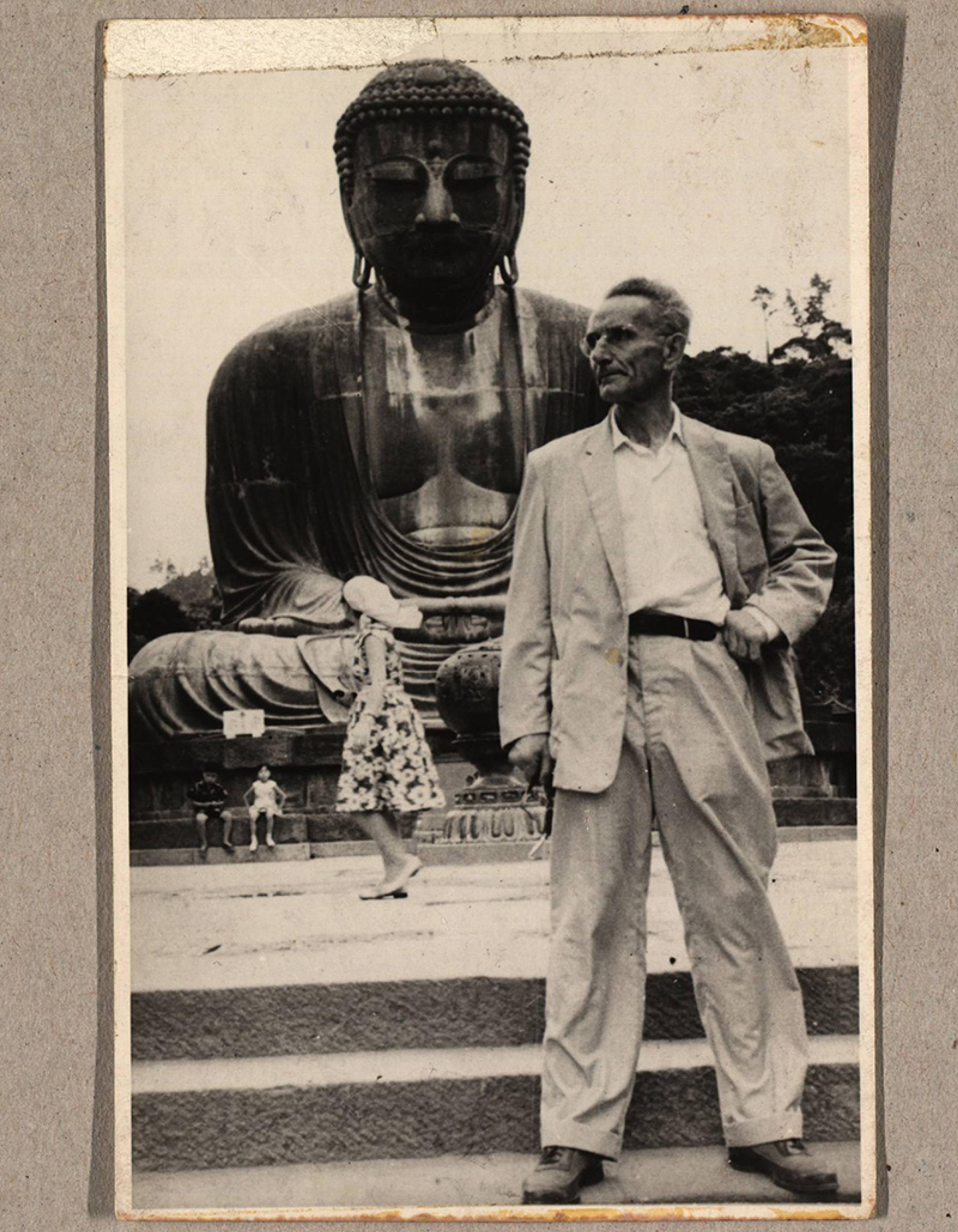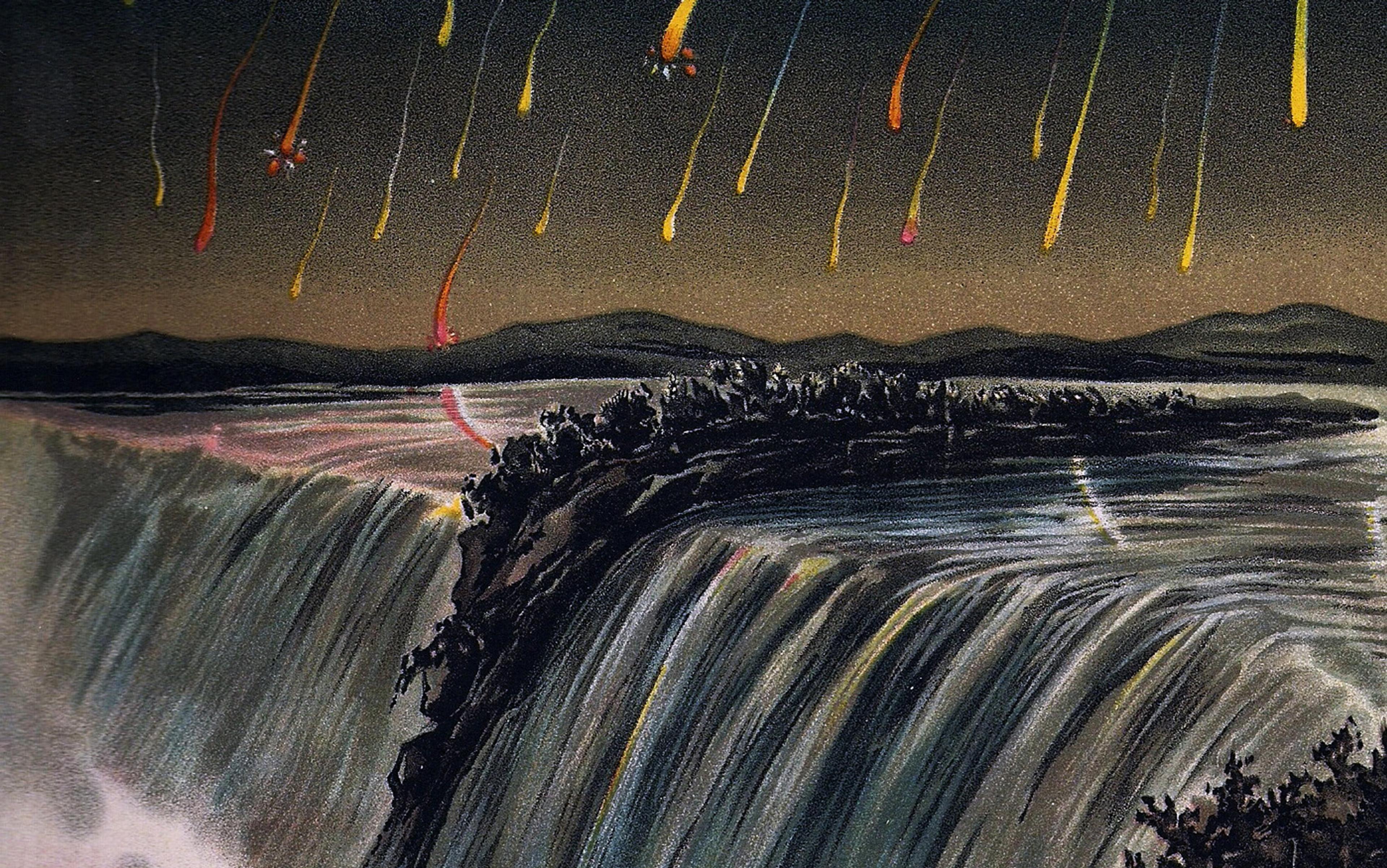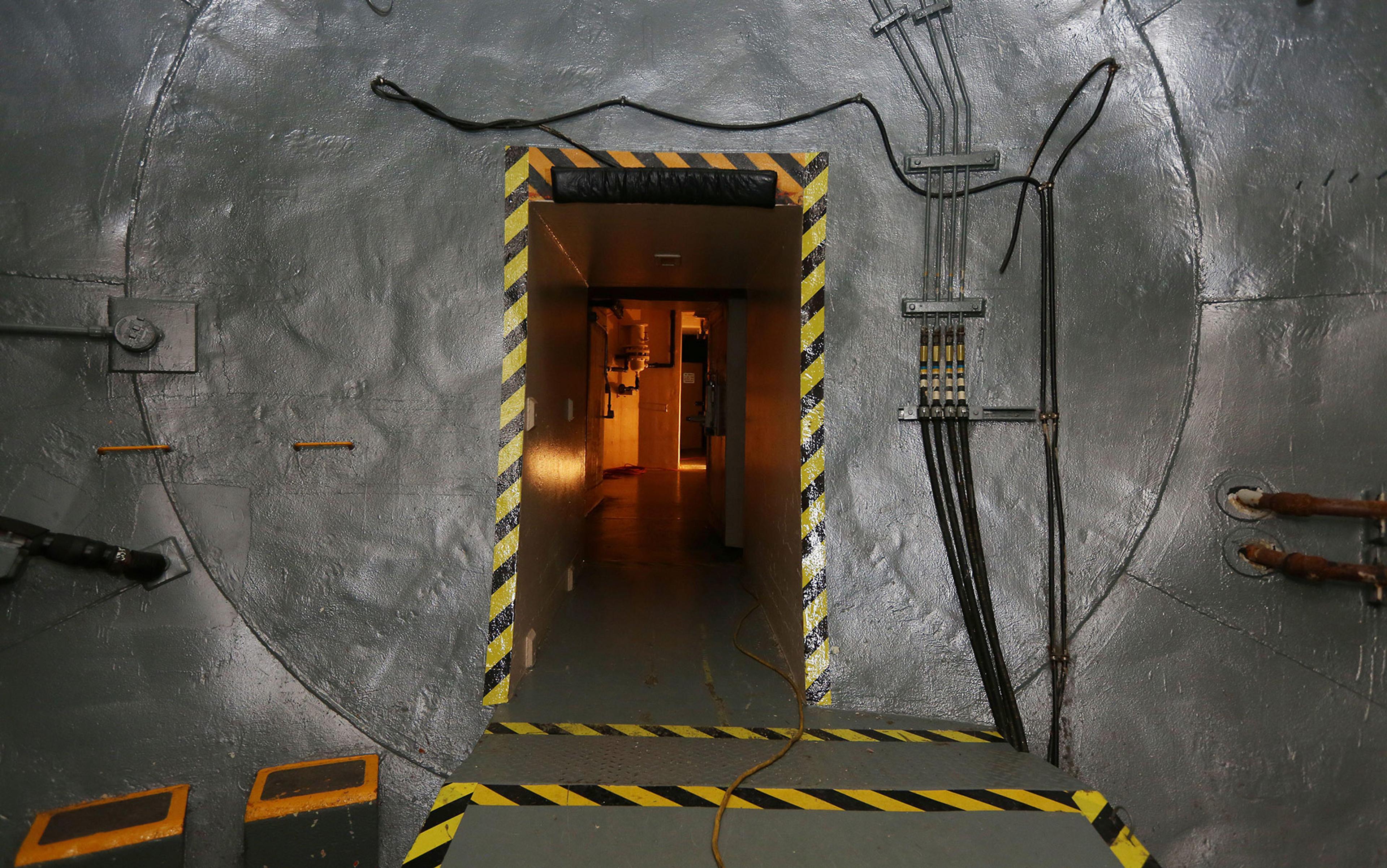As the commander of the weather plane that supported the dropping of the atomic bomb on Hiroshima on 6 August 1945, Claude Eatherly did not feel any particular animosity towards the Japanese, involved as he was in committing arguably one of the most barbaric acts of the Second World War with complete indifference. Eatherly carried out his mission, oblivious to its ultimate finality. How had it come to that? How was it possible that, as the philosopher Günther Anders later wrote, ‘the amount of wickedness required to accomplish the ultimate crime, a disproportionate crime, was equal to zero’?

B-29 Superfortress ‘Straight Flush’ with its commander Claude Eatherly, centre, back row. He later became a friend and correspondent of Günther Anders. Photo courtesy US Air Force
The work of Anders (1902-92), a German philosopher and essayist of Jewish descent, bears testimony to some of the 20th century’s major disasters and their effect on the intellectual landscape of the time. Anders set out to theorise those disasters and the impact of technology on modernity and the human condition, in particular technology’s gradual domination over all aspects of human activity – the commodification, dehumanisation and even derealisation of the world that had resulted from that domination.
Exiled to Paris in 1933, Anders eventually wound up in California, and in the Hollywood film industry of all things, where he supported himself by writing film scripts and doing odd jobs in factories and movie repositories. There, he closely observed the dramatic rise of consumerist culture – from the ashes of the Second World War and Western humanist ideals – while attending seminars held by members of the Frankfurt School. Despite his complicated relationship with Theodor Adorno, much of Anders’s critiques and concerns overlapped with Adorno’s in seeking to come to grips with modernity’s darker side. Much later in life, from his hospital bed, Anders would declare their oeuvre complementary in providing an ‘encyclopaedia of the apocalyptic world’ that had recently unfolded. In 1950, he returned permanently to Vienna.
Anders’s work has long remained unknown in the English-speaking world, perhaps because of what Herbert Marcuse described as its ‘unsparingly critical pessimism’. Yet, it already prefigured key themes later addressed by the philosophers Jean-Luc Nancy, Bernard Stiegler, Jean-Pierre Dupuy and Zygmunt Bauman; and it has recently gained new currency and relevance. Alarmed by some of the social effects of the new phantasmagoric world that had taken shape around us, Anders set out to dissect it and find out how it had inured us to – and even led us to embrace head-on – the devastating effects of technological development, and even our potential extinction, in order to prompt us to break from it by mobilising fear.
As he set out to tackle the challenges faced by the human condition – and the threats to its very existence – Anders jettisoned the academic style of his teachers Edmund Husserl and Martin Heidegger for a more accessible style of philosophical language that paused to consider historical realities as fully fledged philosophical objects. Auschwitz and Hiroshima, in particular, with their mass-production of deaths on an industrial scale, marked turning points in Anders’s thinking. These catastrophes had been made possible by the progress of science and technology, progress that had brought the very existence of our world into jeopardy.
The advent of the nuclear age had transformed peace into the perpetual preparation for war, and, in an interesting reversal of Carl von Clausewitz’s dictum that war is a continuation of politics by other means, threatened to cancel politics altogether by ensuring the mutual destruction of the belligerents. Anders deplored tacticians’ and politicians’ collective blindness, their unconsciousness in seeking to instrumentalise the threat of annihilation for political purposes – a gamble that relied on their very ignorance. In the early 1940s, he wrote (translations from the French my own):
None of us has a knowledge commensurate with what an atomic war could be … which means that, in this field, no one is competent and that the apocalypse is therefore, by essence, in the hands of the incompetent.
The modern use of nuclear power had blurred the distinction between civilian and military, and rendered the possibility of disaster omnipresent. A threshold had been irredeemably crossed when mankind deliberately hung a sword over its head and created the conditions for its self-annihilation.
For Anders, the disasters of the 20th century were simply the logical outcome of a pernicious process that had already been underway for many years, involving the gradual exclusion of mankind from all production processes – and, ultimately, from the world created by those processes. The real catastrophe in this regard, which Anders hoped to make ‘visible for the first time’, lay in the transformation of the human condition, a transformation that had become as naturalised and imperceptible as it was destructive. ‘The atom bomb,’ he argued, was ‘thus the ultimate emblem of an unearthly, unsettling and haunting force channelled by complex technological objects: it illuminates that the more “our” technological power grows, the smaller we become; the more unconditional and unlimited the capability of machines, the more conditional our existence; the more machines connect us by virtue of their very existence, the more we are also singled out as being expendable and inadequate.’

Günther Anders on his way to Hiroshima in 1958. Photo courtesy the Austrian National Library and Günther Anders Archive.
Like his first wife, the philosopher Hannah Arendt, Anders paused to reflect on the retreat of human morality, and on man’s ability to suspend his ability to reflect, to take leave of his sensitivity and empathy. No task was more pressing than examining those processes ‘inscribed at the very heart of our technical modernity’, which meant that ‘the repetition of the monstrous is not only possible, but it is probable’.
Technology restricted our experiential horizons, offering only ready-made worlds
At first protective, technology and artifice, by mediating every dimension of human life, had exacerbated our alienation in the world and now threatened to overwhelm us. In his landmark work The Obsolescence of Man – whose first volume (subtitled On the Soul at the Time of the Second Industrial Revolution) appeared in 1956, and second volume (On the Destruction of Life at the Time of the Third Industrial Revolution) in 1980 – Anders delivered a blistering indictment of modern-day consumerist, technological reality. The modern work model, with its extreme technical division of labour and chains of abstraction, had made the worker lose sight of the end product (and environmental consequences) and reduced his function to mere repetitive execution or monitoring. The worker performed standardised work of little intrinsic value – geared mainly towards profitmaking – in which there was little possibility for self-expression or the cultivation of a work ethic.
For all its benefits, technology restricted our experiential horizons, offering only ready-made worlds and predetermined modalities of experience carefully determined by corporations and advertising industries. As Anders wrote:
The whole world, in so far as it is offered, preestablishes the actions, opinions, feelings that we take into consideration, in short: our entire lifestyle, that our obedience is ensured without our needing to perceive an order as such. Consuming what is free is our obedience, as is delivering the order we receive.
The proletarisation of labour went hand in hand with the production of poor-quality products programmed for immediate obsolescence: objects were no longer intended to last, but to be consumed as perishable materials and replaced at a frantic rate in an unending cycle of creation and destruction justified by advertising’s ‘death drive’. The world had been transformed into a ‘ghost’, derealised through an abundance of ersatz products and make-believe realities that extended well into our private lives in the shape of what Anders described as ‘playful products freely delivered [by radio and TV] at home’:
Nothing alienates us from ourselves or alienates the world more disastrously than spending our lives, now almost constantly, in the company of these deceptively intimate beings, these spectral slaves that we introduce in our living rooms.
This ‘techno-totalitarian empire’ threatened to ‘liquidate’ us and reduce us to mere cogs of the mega-machine. In fact:
the possibility of our own liquidation is the principle we endow all our technological devices with, regardless of what other special function we entrust to them too. Liquidation is the exclusive principle that informs the construction of machines … What we exclusively aim at are machines, the functions of which make us superfluous, turn us off, and liquidate us.
Within this ‘totalitarianism of apparatuses’, programmed obsolescence had been extended to man as he had found himself increasingly assimilated to the technology of production. He had been gradually deprived of his autonomy and ability to create a world for himself, and his freedom was reduced to the stark choice between adequacy within the technological world or exclusion from it for failing to comply with its imperative to continuously produce and consume. By investing all dimensions of human existence, it had ushered in the complete pacification and subordination of man within a fully consumerised society:
This logic that inhabits them comes from the roles that they have been made to play since their invention: saving human labour, increasing production, exploiting nature. This is the gist of the talk about the millions of passive Eichmanns, freed from thought and responsibility, rather than act, who perform unthinking tasks other than in purely instrumental ways. Man is probably not a machine, but he behaves as such in a situation where the machines impose his operating rules. Indeed, the progress of technology should not be understood as necessarily being the progress of mankind: far from it, they are not accompanied by a progress of thought, reflection and responsibility, since they eliminate their intervention and even often make them impossible.
Crucially, man increasingly found himself enlisted in the production of his own disappearance ‘in the most natural manner possible’. Anders set out to analyse the ‘new variety of shame’ that had been imposed on man for having been born, not made. Our design was ‘blind and uncalculated’, our bodies ‘stiff, recalcitrant and limited’, unlike ‘immaculate products, which are carefully designed through and through’ and to which we can never measure up. Technological modernity had imposed our unilateral surrender to machines, rendering our capacities to understand, feel or act redundant and superfluous in the expectation of becoming ‘absolutely consubstantial’ with machines and freed of our ‘shortcomings’ by them. For Anders, the root cause of our apathy lay in the discrepancy that had arisen between our faculties, especially our imagination, and our actions, in such a way that ‘we are unable to conceive what we can construct; to mentally reproduce what we can produce; to realise the reality which we can bring into being.’
The ability to kill thousands at the press of a button was no longer matched by the ability to take the measure of the calamity wrought. This ‘promethean lag’ often anaesthetised our faculties, including our ability to fear the danger that threatens us, for the simple reason that we cannot know what we cannot understand or represent concretely or morally to ourselves. These limitations in us induced a state of irresponsibility, a form of nihilism in action that maintained us as atomised individuals while we laboured toward our own irrelevance and extinction.
Some of Anders’s predictions are eerie in their prescience of how devices and machines have come to mediate our thoughts, discussions, ideas and even relationships, cramming our minds with addictive and pacifying frivolity:
Stage-managing masses the way Hitler did has become superfluous: if one wants to strip man of his personality (and even make him proud to be a nobody), it is no longer necessary to drown him within the mass …
No depersonalisation, no degradation of man is more effective than the one that seems to preserve the freedom of the personality and the rights of that individual. Each separately undergoes the ‘conditioning’ process, which works just as well in the cages where individuals are now confined, despite their loneliness, in their millions of isolated units. This treatment is inconspicuous since it is presented as fun, since it conceals from its victim the sacrifices it demands of her and leaves her with the illusion of a private life or at least of a private space. We will fill people’s minds with what is futile and fun. It is good to prevent the mind from thinking through incessant music and chatter. Sexuality will be placed at the forefront of human interests. As a social tranquilliser, there is nothing better …
In general, we will make sure to banish seriousness from life, to deride anything that is highly valued and to constantly champion frivolity: so that the euphoria of advertising becomes the standard of human happiness and the model for freedom. Conditioning alone will thus produce such integration that the only fear – which must be maintained – will be that of being excluded from the system and therefore no longer able to access the conditions necessary for happiness.
Our ‘blindness in the face of the apocalypse’, which, according to Anders characterises the Third Industrial Revolution, enables us ‘to make plans and to live as if everything … were going to continue as before’. This belief in progress, persistently ingrained since the Industrial Revolution, makes any end to human history inconceivable:
Faced with the idea of the apocalypse, our soul forfeits. Under these conditions, the idea of the apocalypse is no more for us than a simple word.
Much of the recent technological takeover of our lives has been underpinned by the myth that it was synonymous with emancipation and progress – a conceit it was suspect to challenge even while that very imperative further contributed to the growth of inequalities, the destruction of nature and the waste of resources. ‘The real terrorists’ in this regard are the so-called experts in charge who were as ignorant as us but ‘who continuously frighten our common world with the threat of destruction.’ Rather than ‘enlightening’ man, the progress of technology had ended up further anchoring his obsolescence and placing him outside of history.
In light of the looming environmental crisis, our growing servitude to a soulless consumerist society built on waste and exploitation, and the increasingly mediated nature of reality, Anders’s analyses remain strikingly pertinent. Despite increasing media representation of these threats, we live in what Anders called ‘the age of the inability to be afraid’ and still overwhelmingly remain passive in the face of this development. Even when objectively aware of the dangers linked to the climate crisis, the collapse of biodiversity and the diminution of resources, we prefer to continue to pay lip-service to them to better avoid direct confrontation with them. We take refuge in ignorance, even in reckless overconsumption. And yet, faced with the prospect of our not so remote extinction, ‘Do we,’ as Anders challenges us, ‘have the right to sit idly by? Is the mortal gravity of our future … a carte blanche to laziness?’
To cultivate and educate the faculties that have been rendered impotent by technical development, Anders invites us to draw on the memory of past disasters to uphold an image of man in his creativity, ingenuity, sensitivity and responsibility. If we are to survive, according to Anders, ‘we must practise understanding the unseen as the present at all times, and educate the next generation in this understanding and the anguish it demands.’
Above all, we need to resist the temptation to naturalise that which has victimised us and laid the groundwork for our extinction, but instead safeguard our humanity and power as individuals. It is imperative to emerge from our slumber by widening the limits of imagination in order regain awareness of the human, social and moral consequences of our actions, and to conceive an adequate responsibility for any disproportionate consequence. Only then can we hope to ‘keep [our] conscience alive in the age of the machine’.
Anders maintained that widespread opposition to morally irresponsible production and consumerism was possible
Crucially, against the prevailing indifference instilled in us by the ambient technological nihilism, Anders tried to impress upon us the necessity to rebel and panic, turning fear into a revelation and object of lucidity. In this manner, he prefigured the ‘enlightened catastrophism’ theorised by the French thinker Dupuy. Convinced that humanity was on borrowed time, Anders hoped to ‘sow panic’ and wrest his readership from its apathy: ‘Because he who sees the danger in panic, and not in the danger against which we warn those who are anxious to be anxious, distorts the truth and wilfully blinds his neighbours’ – and to design a new morality capable of taking into account new catastrophes and the preservation of mankind.
Specifically, Anders enjoined us to protest and revolt against the fatality of techno-totalitarianism. Drawing on the socialist struggles against capitalist servitude and the proletarian successes of the 19th century, and on his own reflections on atomic bombs – ‘nothing is more false than to assert that in our time we would no longer have the power, the same duty of resistance’ – Anders maintained that a determined and widespread opposition to certain modes of social organisation and morally irresponsible forms of production and consumerism was possible, for example through unions and political movements. He also called for strike action against production and consumption:
We would therefore have to explain to them that a strike of a totally new kind is necessary today, a strike whose object is fundamentally different from that of all the strikes that have taken place until now: that the strike is today desirable not only when it comes to combating intolerable working conditions or wages, but also when the products that we are asked to manufacture lead to unjustifiable effects; that he who feels in himself even a spark of responsibility has a duty to refuse to take part in the manufacture of such products, regardless of the salary offered for it.
By refusing to collaborate with an oppressive order, by creating forms of resistance to any order that perpetuated massacres, devalued us as human beings, atomised societies and imperilled our very existence, we could then perhaps hope to salvage man from a conformist throwaway culture. In The View from the Moon: Philosophical Reflections on Space Travel, Anders, decades before a new generation of billionaires attempted to colonise space, imagined looking back at Earth from the Moon. It is perhaps still not too late to regain a sense of our shared destiny.






